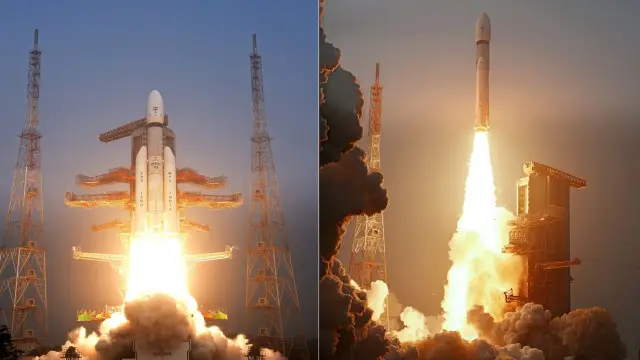Chandrayaan-3's Vikram lander unveils major discovery: Shiv Shakti point dates back 3.7 billion years!
Chandrayaan-3's Vikram lander discovered that the Shiv Shakti Point on the Moon is 3.7 billion years old, dating back to the time when life began on Earth. This finding provides insights into the Moon's geological history and early solar system conditions.

India's Chandrayaan-3 mission achieved a historic milestone by successfully landing its Vikram lander near the Moon's south pole on August 23, 2023. The landing site, named Shiv Shakti Point, has been the focus of extensive scientific research, revealing significant insights into lunar history.
Age of Shiv Shakti Point
Recent studies by scientists from ISRO's Physical Research Laboratory in Ahmedabad have determined that the Shiv Shakti Point is approximately 3.85 billion years old. This estimation places it in the Nectarian period, a time characterized by frequent asteroid impacts that shaped much of the lunar surface.
Geological significance
The region around Shiv Shakti Point is geologically unique. The Pragyan rover, deployed by the Vikram lander, traversed approximately 103 meters in this area, conducting detailed analyses of the lunar soil and rocks. The rover's observations revealed a uniform composition dominated by ferroan anorthosite, a type of rock that forms from the crystallization of molten magma. This finding supports the hypothesis that the Moon once had a global magma ocean, with lighter minerals like anorthosite floating to form the crust while denser materials sank to form the mantle.
Impact events and surface features
Further analyses indicate that the landing site is situated within a large, ancient crater, approximately 160 kilometers in diameter, partially buried under ejecta from the South Pole-Aitken basin—the Moon's largest and oldest impact basin. This suggests that the area has been shaped by multiple significant impact events over its history. The absence of large boulders and the presence of weathered rock fragments imply extensive space weathering and erosion over billions of years.
Correlation with earth history
The estimated age of Shiv Shakti Point, around 3.85 billion years, coincides with a pivotal era in Earth's history when the earliest known microbial life began to emerge. This parallel offers a unique opportunity to study and compare the early geological processes of both celestial bodies, potentially providing insights into the conditions that fostered the emergence of life on Earth. the discoveries at Shiv Shakti Point by Chandrayaan-3 have not only enhanced our understanding of the Moon's geological history but also provided valuable context for the early conditions of our own planet.













